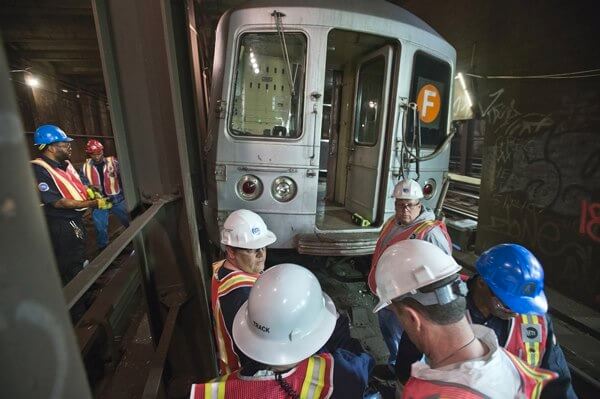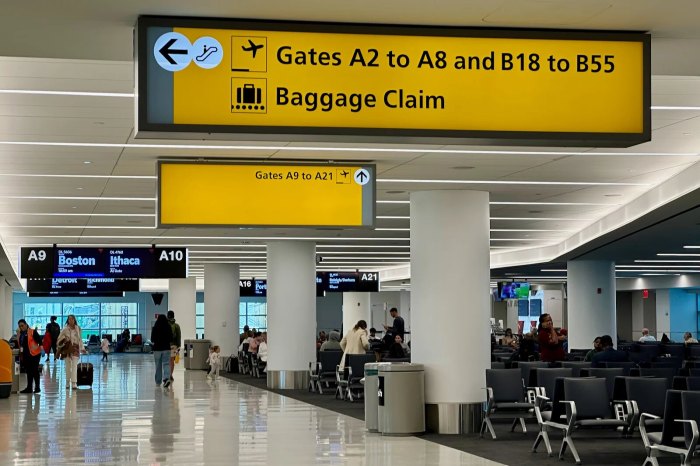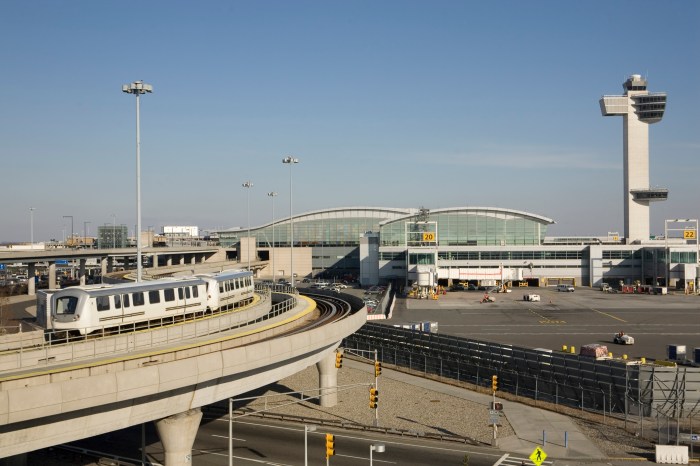By Mark Hallum
New York City Transit President Andy Byford unveiled what some agency board members regard as a bold plan to bring the most critical parts of the subway system into the 21st century in just five to 10 years as opposed to the previously projected 40 years.
The plan will close stations overnight and temporarily inconvenience millions of riders for the sake of completing a full install of Communication-based Train Control to replace the century-old analog signals across multiple lines.
“Our plan demonstrates what can be done in advancedly expedited time frame to transform New York City Transit from its state of emergency,” Byford said with emphasis on the last three words at Wednesday’s board meeting. “It won’t be easy to complete such massive upgrades on such a compressed time frame on such a busy system. Transit is in a trough right now, but we can and we must come back.”
In Queens, the No. 7 train will see a complete install of CBTC in 2018 alongside the L line, followed by the E, M, F, R and G trains in the next five years, and then installations will begin on the N, R, W and A within 10 years.
But the price tag may be shocking to some with an estimated $19 billion needed in the coming years.
MTA board member Veronica Vanterpool backed Byford’s plan during Wednesday’s meeting regardless of the potential “sticker shock” expected to go along with any major spending to bring the subways into a state of good repair, especially since she believes the usual budget of $3 billion per year is not sufficient to run the agency, which serves 8.6 million people per day as a whole.
“This plan properly identifies and offers substantive solutions for the significant infrastructure problems facing the subway system,” state Sen. Michael Gianaris (D-Astoria) said. “The plan does not, however, answer the question of where the money to finance this ambitious proposal will be found. I have proposed a surcharge on New York City millionaires to help fund necessary subway improvements. Other viable solutions have also been proposed. Above all else, we must do something and quickly enact one of these ideas to establish a dedicated revenue stream to save our mass transit system from further calamity.”
The Wednesday announcement follows plans to expand service in November on the A, D, E and F lines in the hours after the morning and evening rush by one to three additional trains on each line.
Buses will also get a boost in Queens with the Q6, Q8, Q29, Q47, Q49, Q101 and the Q65 slated for increased service on Saturdays starting in July to meet high demand.
But Byford’s plan is not the only major improvement plan from the MTA.
Long Island Rail Road President Phil Eng unveiled a plan to rescue the commuter line from the decline in service it experienced throughout 2017.
The nation’s biggest commuter railroad will be bringing improvements to the system by adding countdown clocks currently in operation at 116 stations, with a full roll-out by the end of summer, and repair 10 problematic switches attributed to 44 percent of the 205 failures in 2017, including one at Jamaica Station.
“LIRR Forward is the first formal step in a new direction that will help us anticipate our problems before they arise, set standards on how to quickly and correctly respond to the challenges we face, to deliver what our ridership expects of us – which is safe, reliable service bolstered by timely, accurate and effective communication,” Eng said.
A report by state Comptroller Thomas DiNapoli claims the Long Island Rail Road had the worst on-time performance in nearly two decades in 2017.
With up to 9.2 million riders inconvenienced, the regional economy sustained about a $75 million loss in productivity throughout the year, with an on-time performance of 91.4 percent, which had not been seen since 1999, according to DiNapoli.
January 2018 was the worst month for the LIRR in 22 years, making a slight recovery in February.
Reach reporter Mark Hallum by e-mail at mhall



































